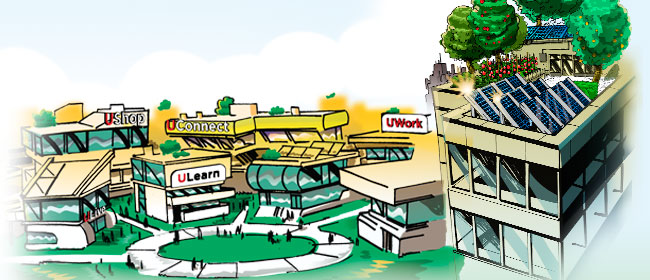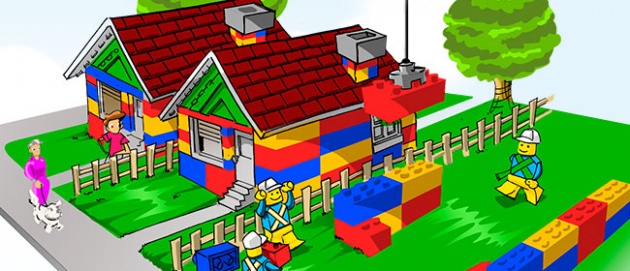
Come Together
Forget the monoculture with houses here and shopping and work way over there. “We’ve got land-use policies that were designed for separate uses,” says Gondek. “In the future, we need to look at social behaviour to mix uses effectively.” A prime example is UCalgary’s own University District; its plans call for a K-12 urban school located in a multi-use building, next to a park, so that children in the ’hood can walk or ride their bikes while their parents can get to grocery stores, recreation facilities and offices on foot.
Under One Roof
Multigenerational families — groups connected by blood or by choice — will increasingly live together, predicts Gondek. “Social isolation will be seen as important a reason as medical or physical assistance for living in closer quarters.” It’s already happening in Conrich, a hamlet east of Calgary, where some southeast Asian families are buying farms and building homes suitable for extended families, with multiple kitchens and several master suites for parents, grandparents and other relatives.
Hipster Central
Downtown’s office towers could be revitalized by artists and hipsters bringing galleries, shops and design collectives to low-rent spaces on the ground floors, with a mix of offices and apartments upstairs. Even cooler? Power these vertical villages with renewable energy from the sun, wind and geothermal — plus, reuse grey water for rooftop greenhouses.
People’s Needs First
Don’t want to live in a high-rise? The City of Calgary’s new R-CG land-use designation mixes cottage-style housing “clusters” — cottages grouped around an open space — with row housing, duplexes, secondary and backyard suites for less-intrusive density. “With these options added to the standard detached single-family home, neighbourhoods will be able to accommodate evolving household needs,” says Gondek.
Call it ‘Chunkictecture’
Prefabrication is the way of the future, Taron says. Chunks of houses — walls, floors, stairs, roof — will be built in factories, the pieces nested together and transported to the lot. “Within six hours or less, they’ll be craned into place, bolted together and the electrical and plumbing plugged in,” he says of the form he dubs “chunkictecture.”

Put it Together, Take it Apart
Eventually, prefabrication will allow housing to expand and contract with people’s lives. A young couple might start with a basic kit: a kitchen, living area, bedroom and bathroom. Instead of selling and moving as they expand their family, they’ll add modules, maybe another bathroom or a couple of bedrooms. “Over time, as the kids grow up and move out, the couple could put those modules back into a secondary market to recover costs,” Taron says. “It starts to address problems such as affordable housing as resale chunks would be more affordable.”
← Main Article Next Article →






